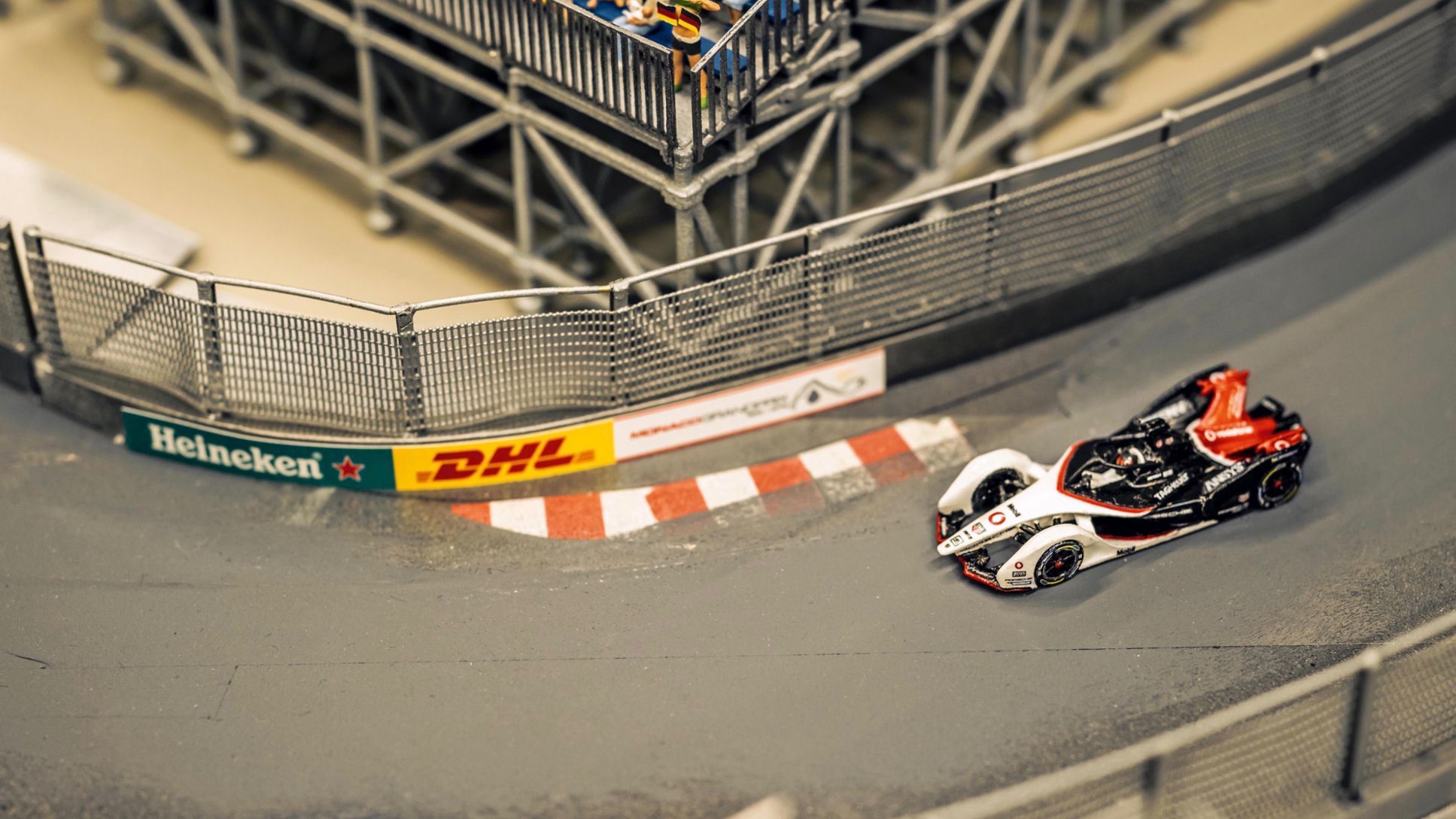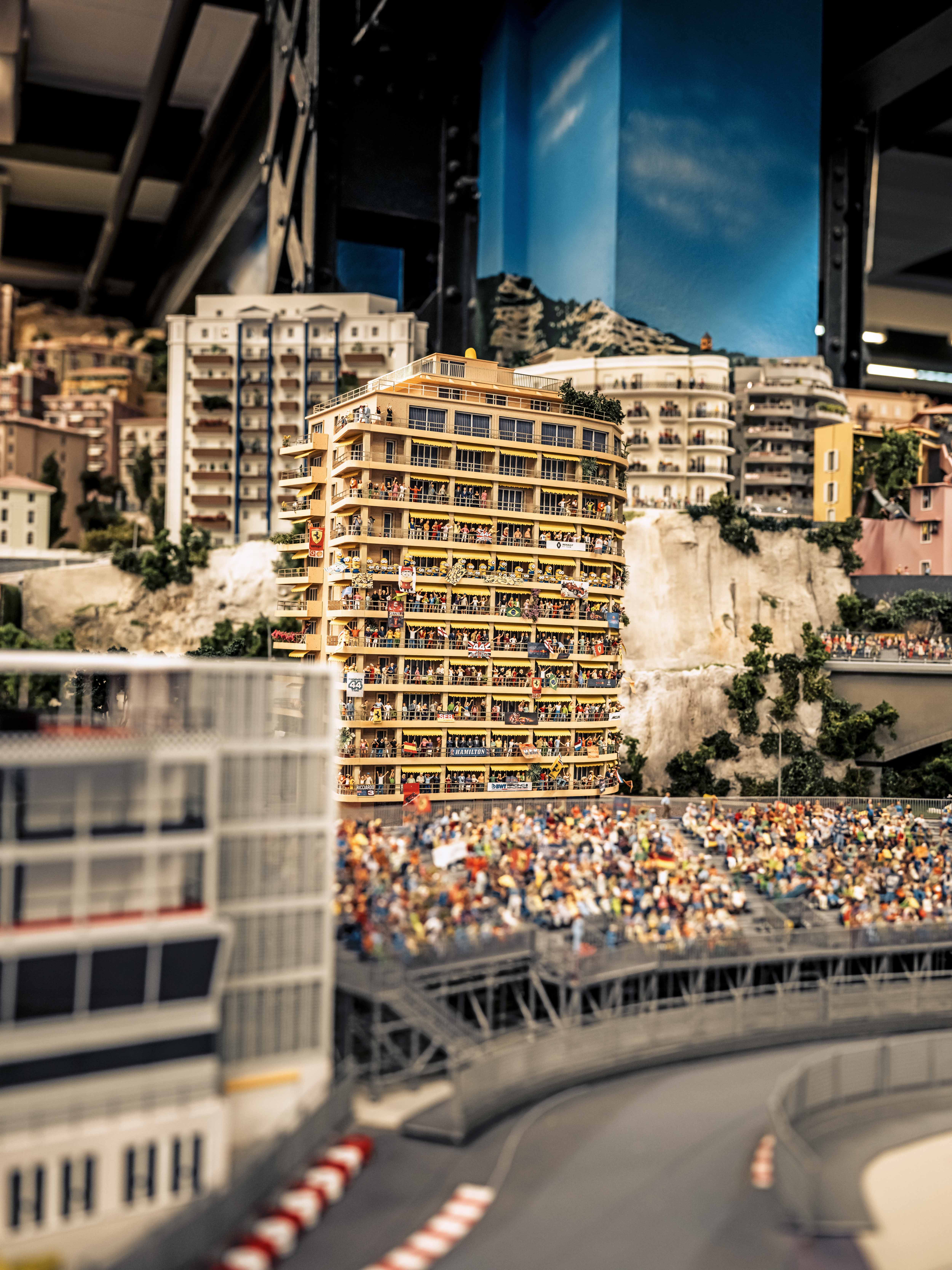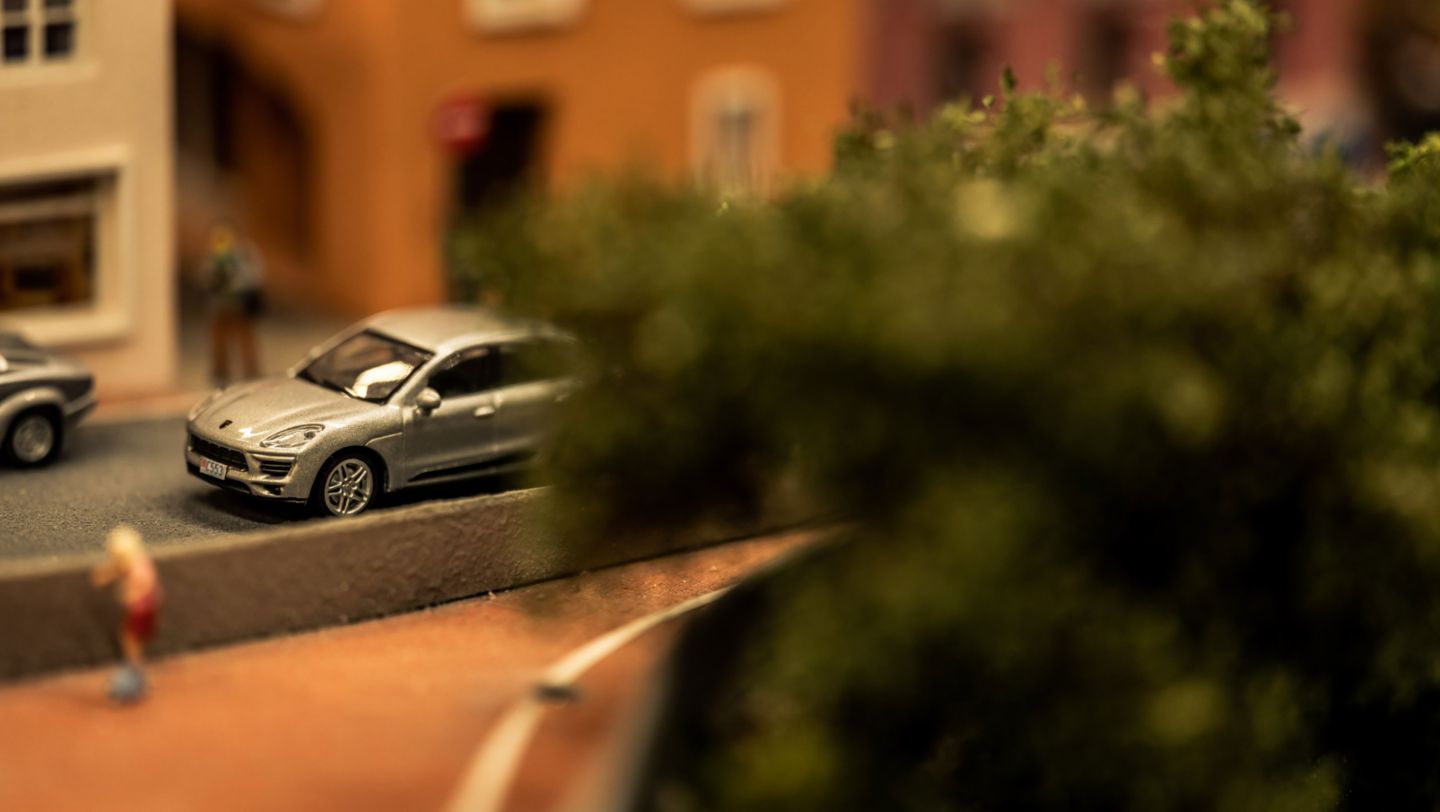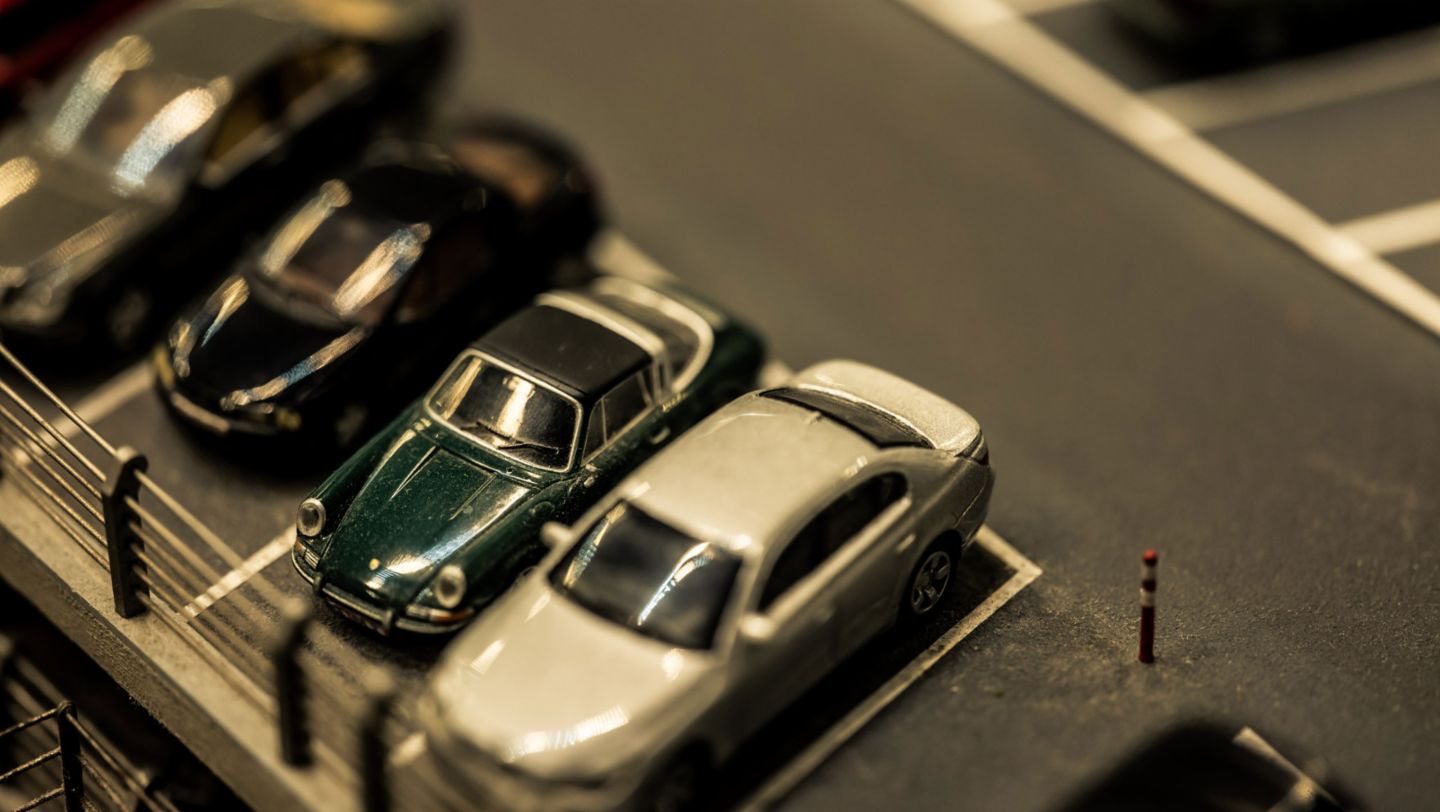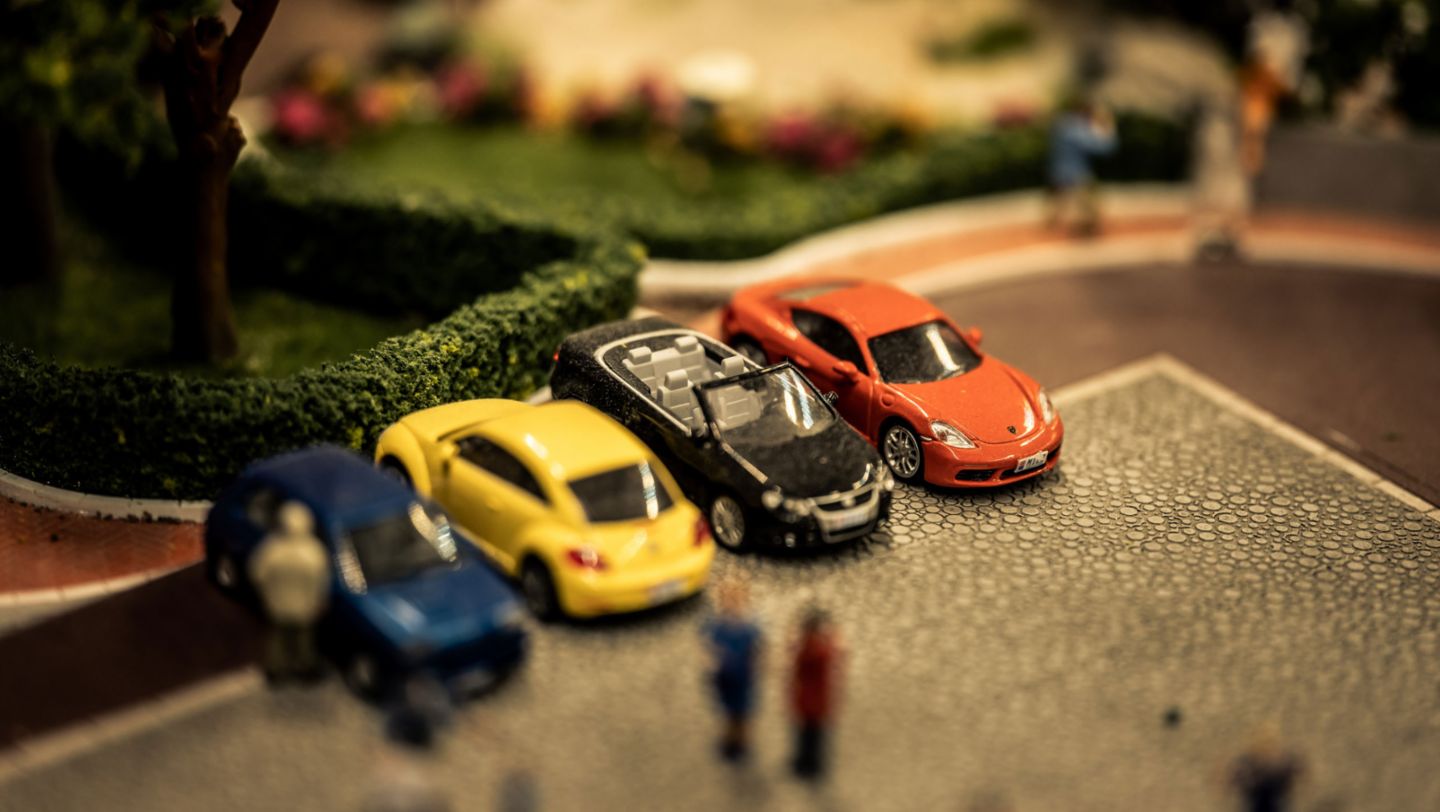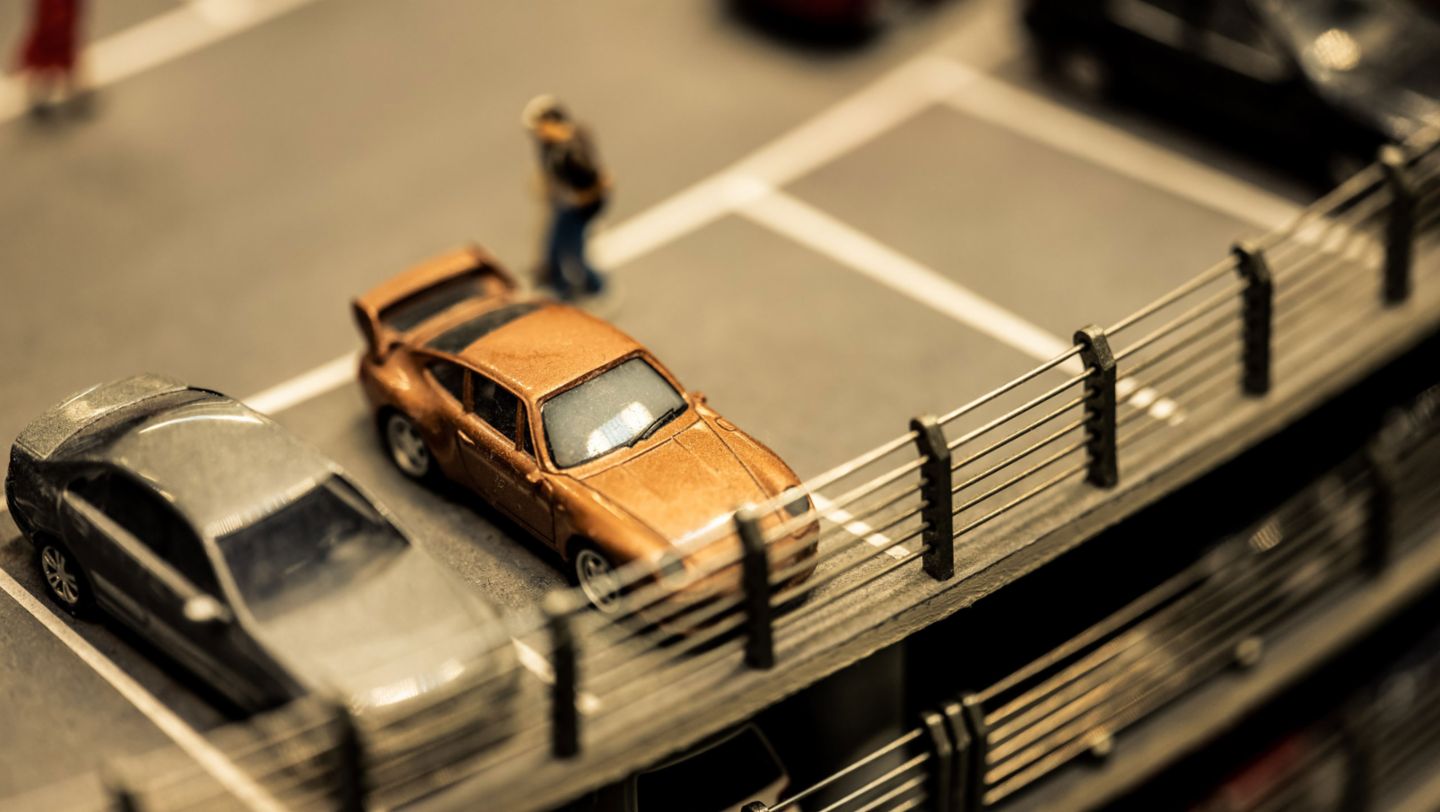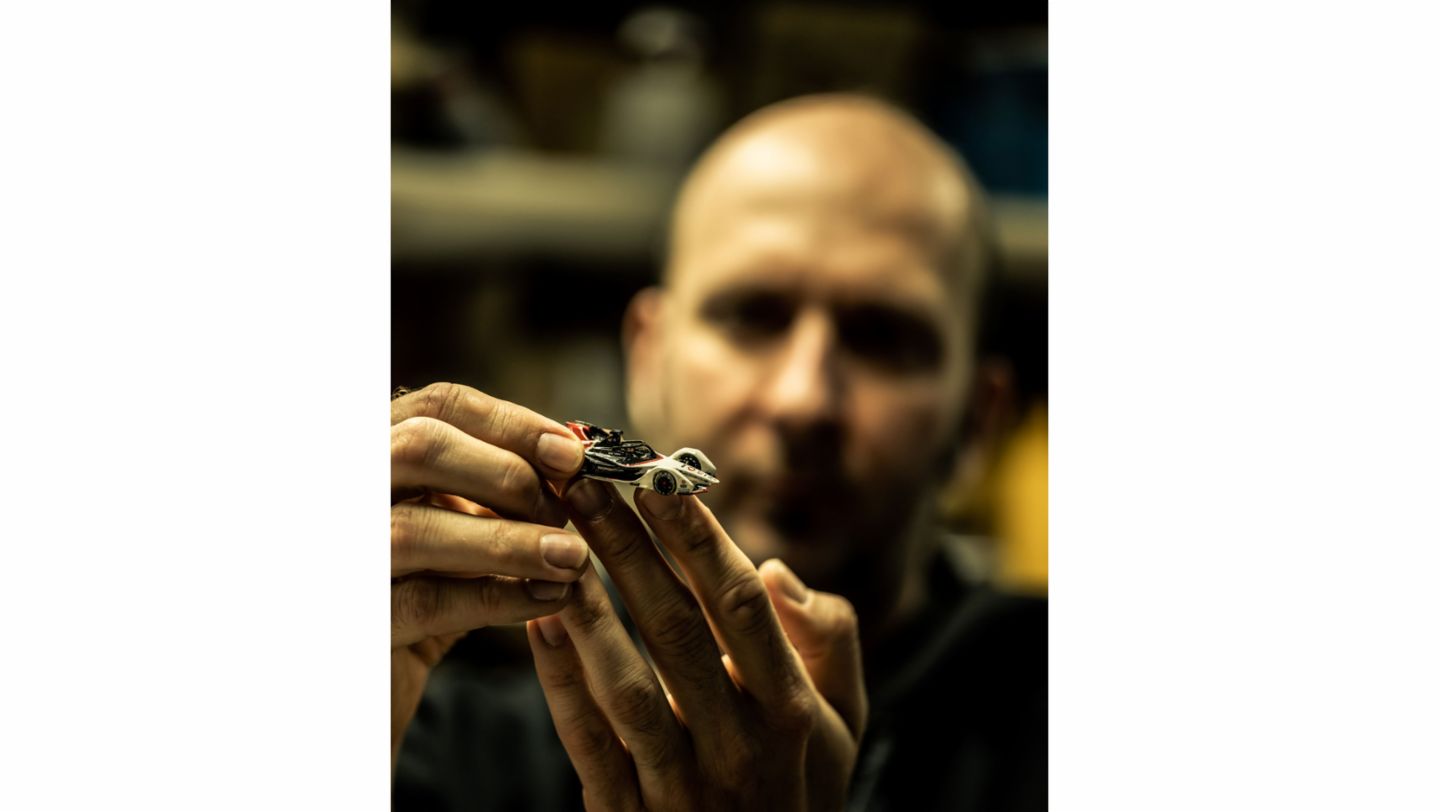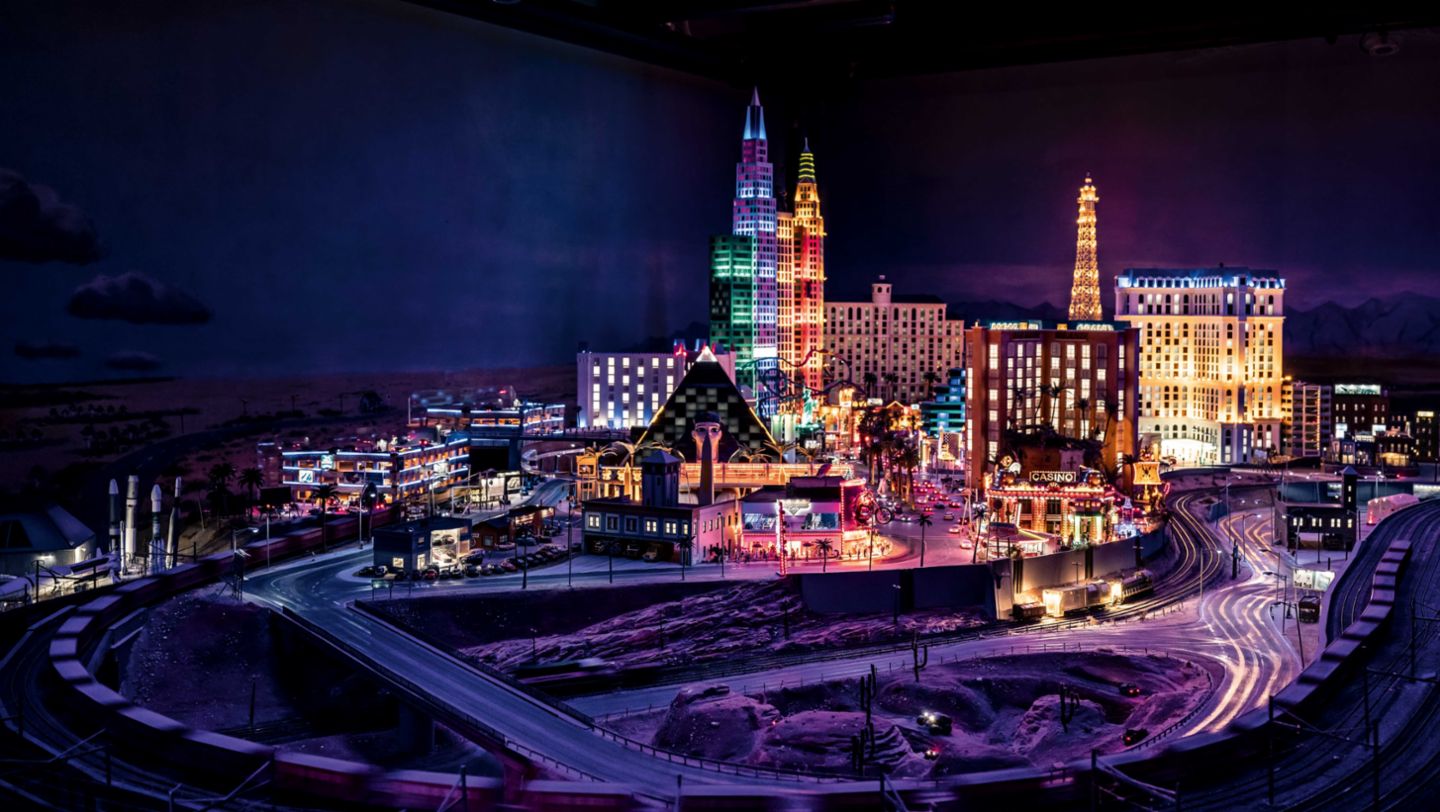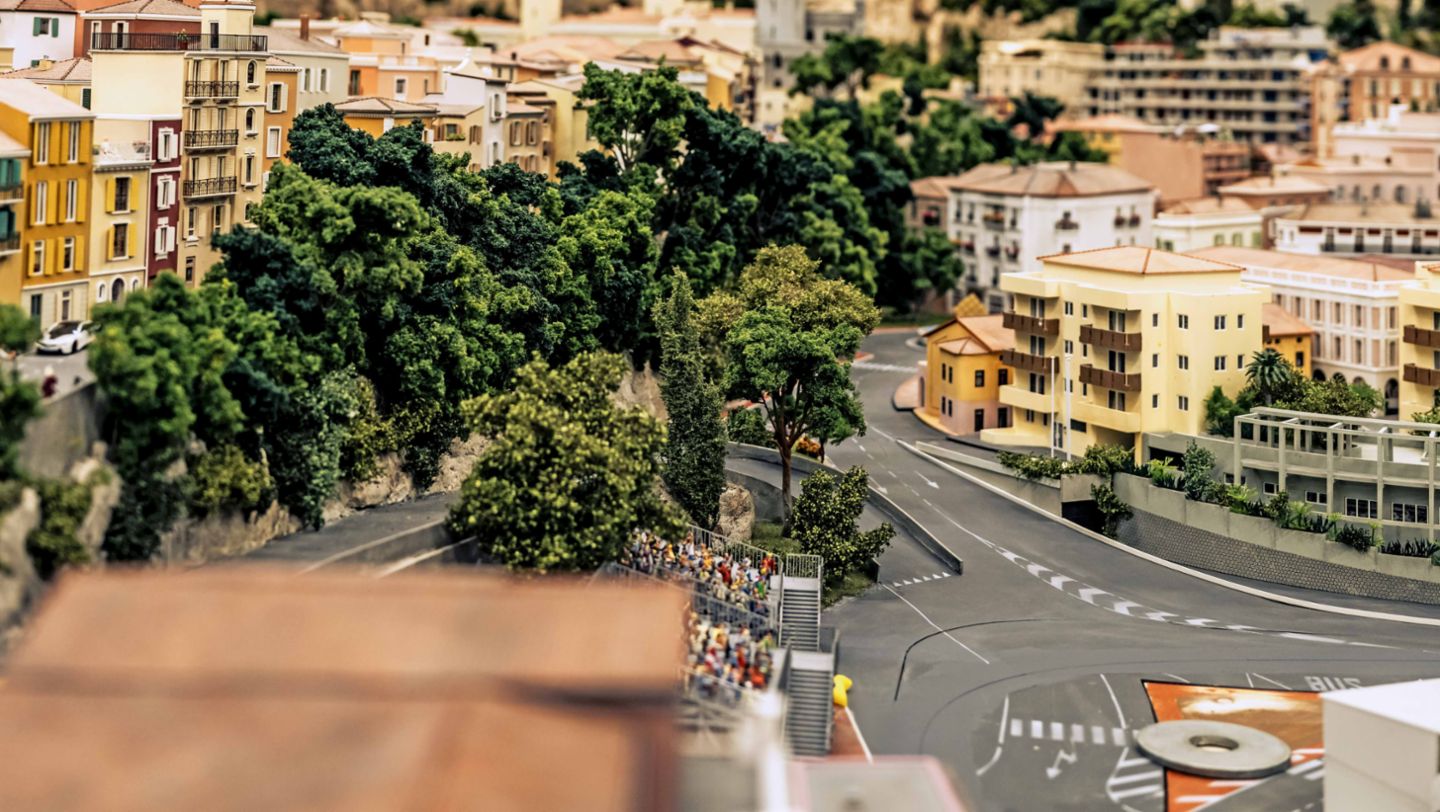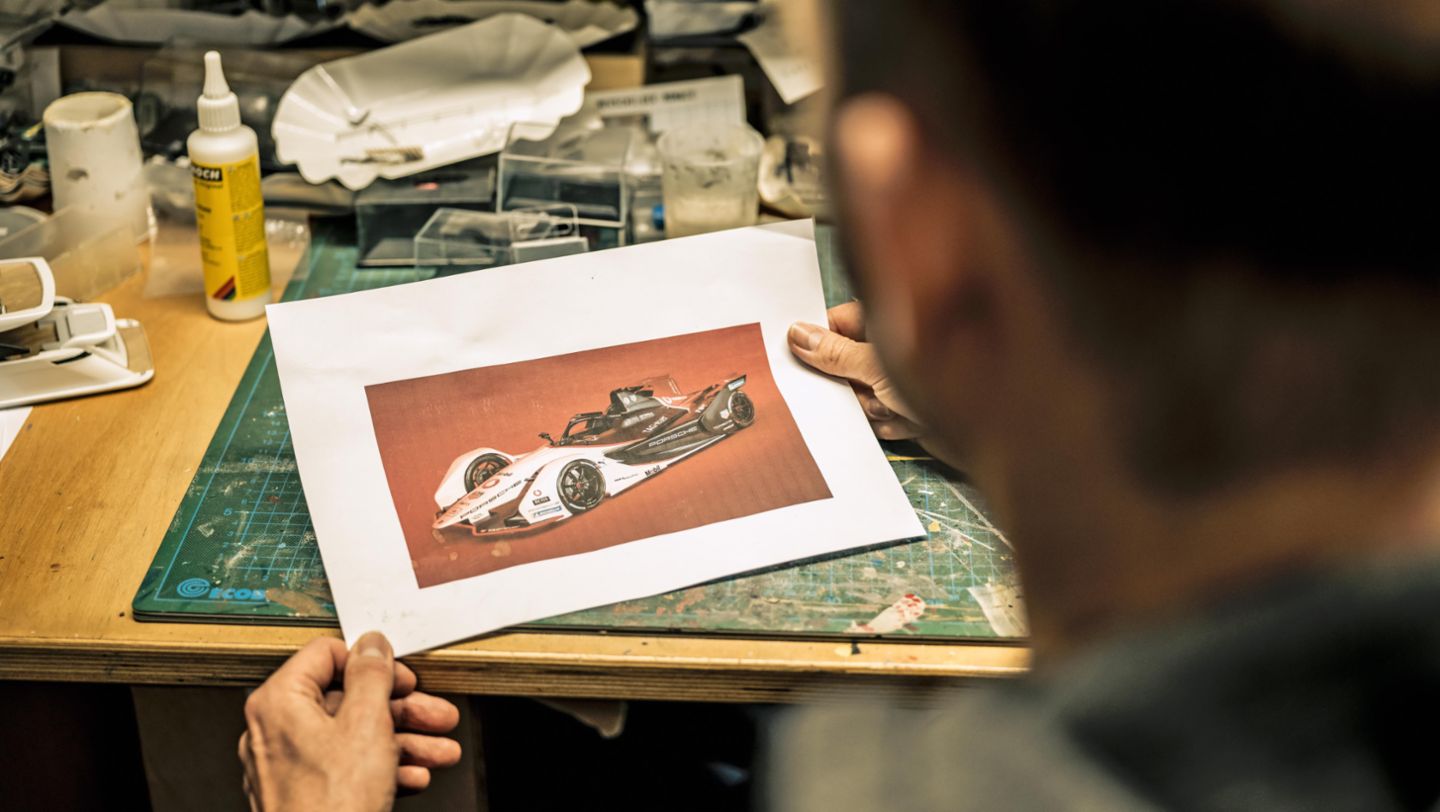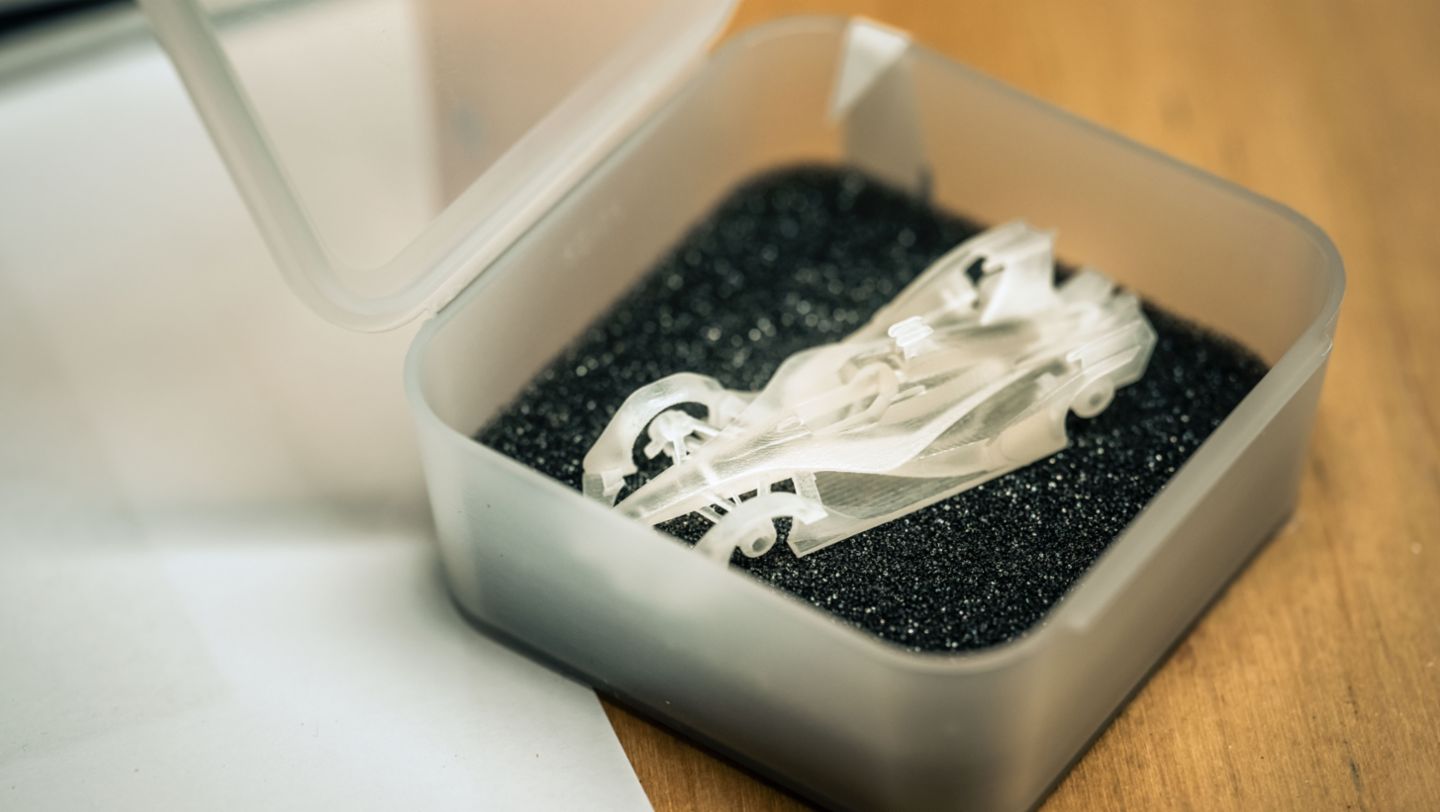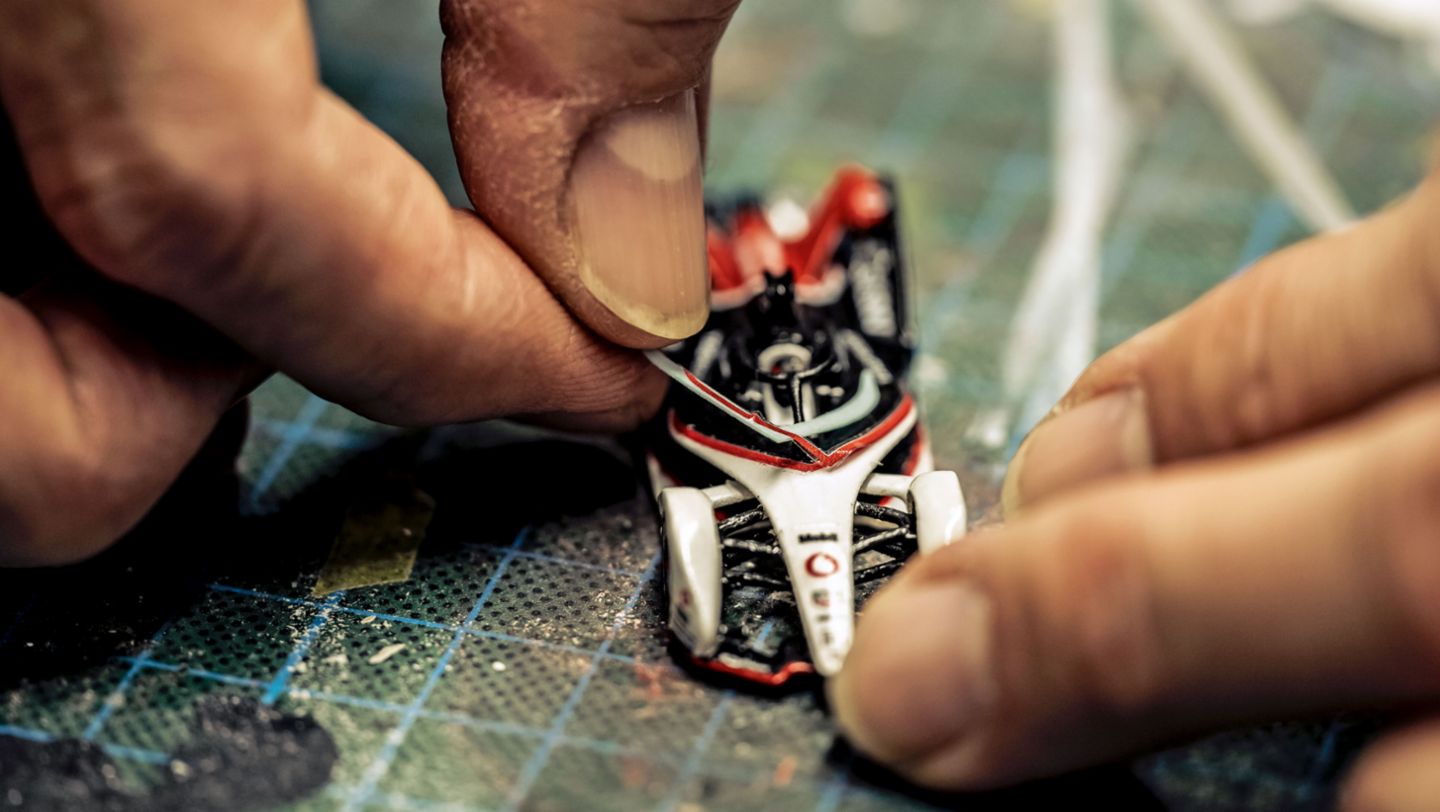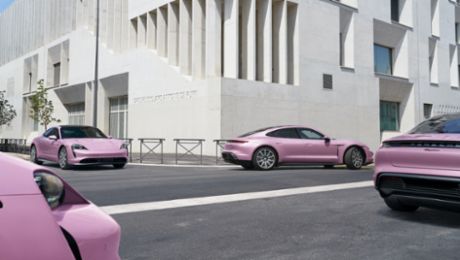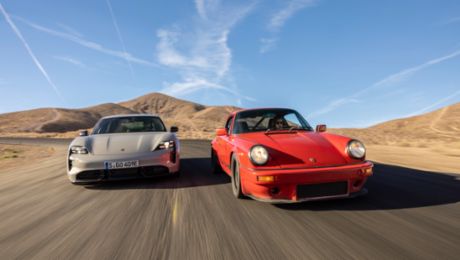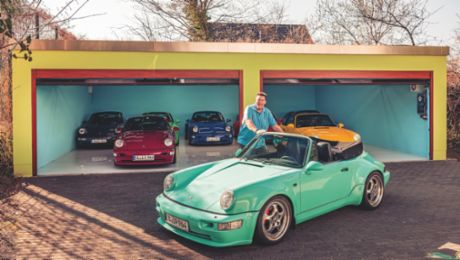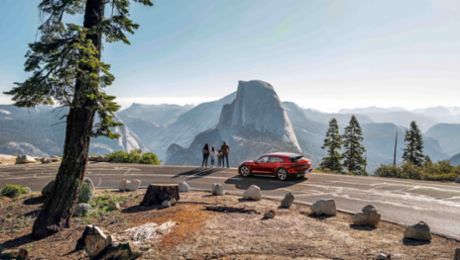“This is where the Porsche 99X Electric reaches its top speed,” says Gerrit Braun. He stretches his arm out over Monaco harbour and points to the long straight line bordered by high-rises, with spectators crowded on their balconies.
“It’s important to brake into the left-hand curve toward the casino.” The ideal place to pass, especially because visitors have the perfect view of all the racing action. Braun and his Miniatur Wunderland team in Hamburg first had to shrink Monaco. Like everything else here, the principality on the French Riviera was reproduced at a scale of 1:87. And even the racing cars are just six centimetres long. Their top speed of 85 cm per second would translate to nearly 270 kmh in the real world. This is as realistic as it gets – but that’s also what makes the whole undertaking so difficult.
Monaco as the biggest challenge
“We’ve been working on the motorsport project since 2015. It’s our biggest challenge to date,” says Braun. The 53-year-old and his twin brother Frederik founded Miniatur Wunderland in Hamburg’s Speicherstadt district 20 years ago. The entire exhibition space measures more than 10,000 square metres in size and, with around 1.4 million visitors a year, is one of the most popular attractions in Germany.
There are 9,250 cars, 269,000 figures, 15,715 metres of track, 1,040 trains with more than 10,000 carriages, 4,340 buildings and 130,000 trees. You’ll find cities, villages, mountain panoramas, an airport, artificial northern lights, and a fair. More than 300 employees have spent around one million hours creating an accessible microcosm of trains, ships, and airplanes in constant motion. At a scale of 1:87, many of the models are Porsche sports cars, including most recently the Porsche 99X Electric. Porsche Motorsport supplied the CAD data for the Formula E racer from Weissach.
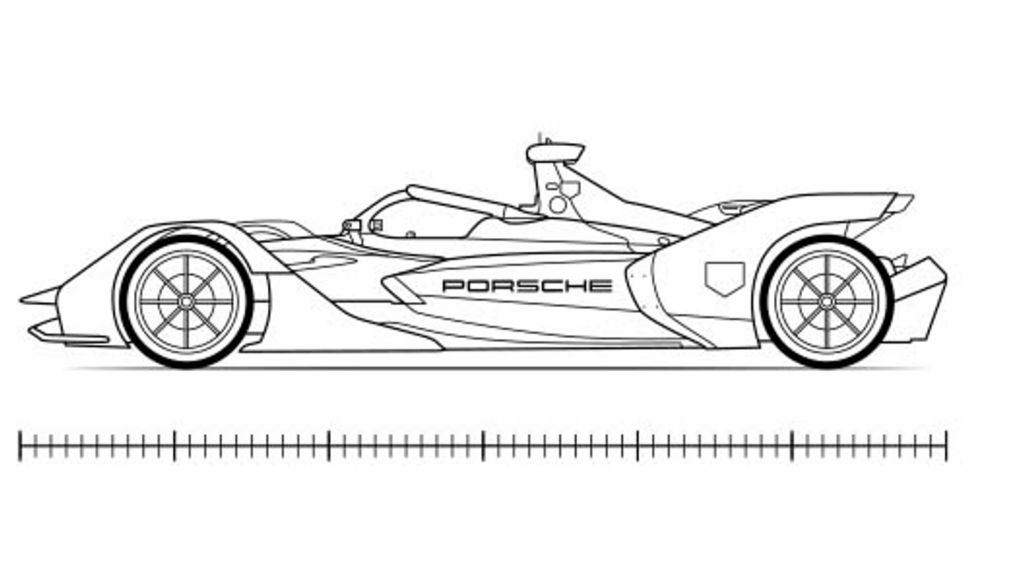
The redesigned south of France, which will officially open in the first half of 2022, also features the legendary Monaco Grand Prix course. “We’ll alternate between Formula One and Formula E races,” says Braun. “Everything true to the original, with parade lap, safety car, starting grid – and then action!”
A small-scale scenario this realistic has never been built before. Everything had to be created from scratch. The software responsible for controlling 20 racing cars was developed on Braun’s computer. The system responds to the driving manoeuvres of the other racers within 50 milliseconds, so each race is different. With real battles for position, passing manoeuvres, and occasionally even a crash. “Of course, we want to avoid that if at all possible because then the safety car has to come out and a couple of people are kept busy for some time,” says Braun.
While the race simulations are already running in the computer, Braun still has to teach the cars to accelerate at just the right moment. “The software always wants to maintain the lead, but sometimes you just need to slow down during a race. Programming all that is a complicated process.” The small electric cars are powered by magnetic fields. The 21-metre course through miniature Monaco is made up of 24 special circuit boards with a total of 1,400 magnetic field sectors, each of which is controlled separately and generates its own magnetic field.
3D-printed racing cars
While the software still needs some work, the racing cars are already raring to go. They were created using the model building experts’ 3D printer and sheets of plastic just 0.03 millimetres thick. The chassis are painted over multiple times and faithfully reproduced down to the smallest sponsor stickers to reflect their full-size counterparts. The underbody conceals a Halbach array, a diamond-shaped panel that serves as the counterpart to the magnetic fields along the course.
If everything goes according to plan, the miniature car races will be the Hamburg team’s next global milestone in the field of model building. “The crowning achievement of all our efforts,” says Braun. “Even more complex than the airport with its airplanes taking off and landing, which was commissioned in 2011.” The fact that the masterminds of miniaturization have been working on the ambitious idea of a real racecourse for six years demonstrates their passion as well as the sophistication of the project. According to Braun, the unsolvable problem with miniaturization is this: “We may be able to shrink down objects, but we can’t shrink down time.”
Info
Text first published in the Porsche customer magazine Christophorus, No. 401.
Author: Sven Freese
Photographers: Thorsten Doerk, Daniel Fröhlich (Getty Images)
Copyright: All images, videos and audio files published in this article are subject to copyright. Reproduction in whole or in part is not permitted without the written consent of Dr. Ing. h.c. F. Porsche AG is not permitted. Please contact newsroom@porsche.com for further information.
